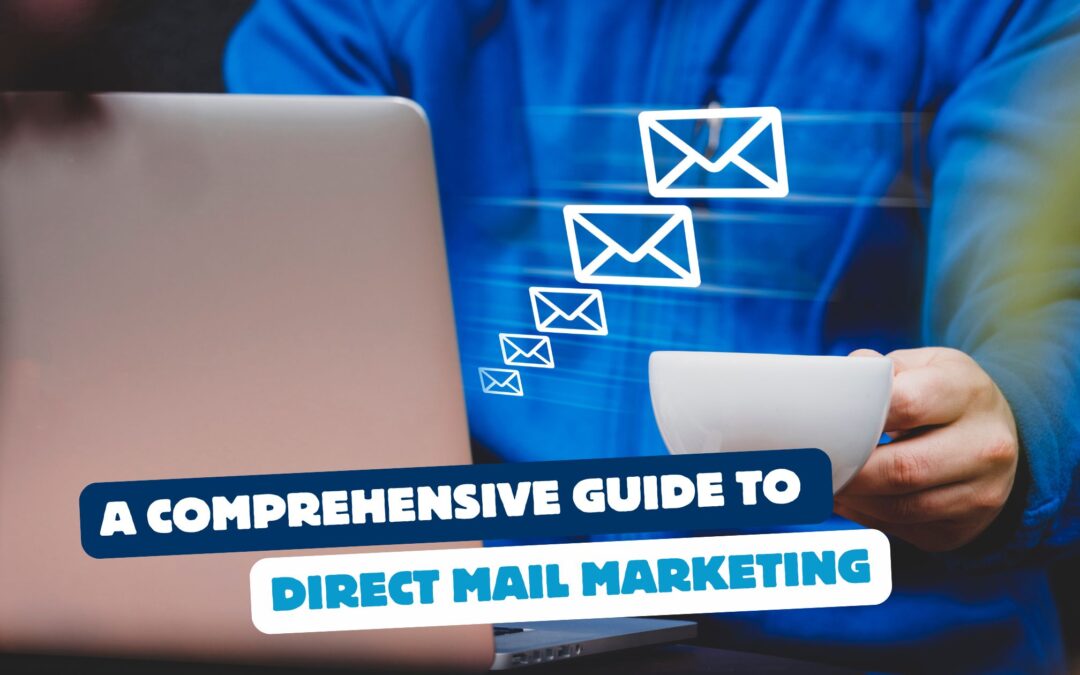In today’s world of overflowing inboxes and digital noise, traditional marketing methods are making a surprising comeback. One of the most effective and often overlooked channels is direct mail marketing.
While digital ads and emails are powerful, they can be easily ignored or deleted. Direct mail, on the other hand, is tangible—it lands directly in your audience’s hands, creates a physical connection, and often leaves a lasting impression. For businesses aiming to stand out, especially in the U.S. market, direct mail can be a powerful complement to digital strategies.
In this guide, we’ll walk through what direct mail marketing is, why it works, its benefits, and best practices for building successful campaigns.
What Is Direct Mail Marketing?
Direct mail marketing is a form of offline advertising that involves sending printed promotional materials directly to a targeted list of recipients via postal mail. Common examples include:
-
Postcards
-
Letters and brochures
-
Catalogs
-
Flyers
-
Coupons or discount offers
-
Dimensional packages or branded merchandise
Unlike digital marketing, which reaches audiences online, direct mail creates a physical experience—recipients can touch, feel, and keep the materials, which often leads to higher recall and engagement.
Why Direct Mail Still Works in the Digital Age
It might seem old-fashioned, but direct mail continues to deliver strong results, especially in the U.S. Here’s why it works:
-
High Open Rates: According to United States Postal Service (USPS), 90% of direct mail is opened, compared to average email open rates of 20–25%.
-
Less Competition: With many brands focusing solely on digital, direct mail stands out more and faces less clutter.
-
Tangible Impact: Physical mail creates a sensory experience, which builds trust and brand recognition.
-
Highly Targeted: You can target households or businesses based on demographics, geography, purchase history, and more.
-
Proven ROI: Studies show direct mail can produce strong response rates, especially when combined with digital channels like email or social media.
Types of Direct Mail Campaigns
There are many creative ways to use direct mail depending on your goals:
-
Acquisition Campaigns: Target new prospects with introductory offers or free trials.
-
Retention Campaigns: Re-engage past customers with loyalty rewards or renewal reminders.
-
Cross-Selling Campaigns: Promote complementary products or services to existing customers.
-
Event Invitations: Send printed invites to webinars, conferences, or store openings.
-
Seasonal Promotions: Share holiday sales, birthday discounts, or limited-time deals.
Building a Successful Direct Mail Strategy
Creating effective direct mail campaigns takes more than just printing postcards. Follow these steps to maximize impact and ROI:
1. Define Your Audience
Start by clearly identifying who you want to reach. Use customer data, market research, or purchased mailing lists to build a targeted audience profile. Segmenting by location, demographics, interests, or purchase behavior ensures your mail lands in the right hands.
2. Craft a Clear and Compelling Message
Because direct mail is physical and often skimmed quickly, your message must be concise and compelling. Focus on one main offer or call-to-action (CTA). Use clear headlines, persuasive copy, and emphasize the value for the recipient.
3. Design for Attention
Visual appeal matters. Use eye-catching colors, high-quality images, and clean layouts. Include your brand logo and make sure the design aligns with your overall brand identity. Also, ensure your CTA stands out visually—whether it’s a phone number, QR code, or website URL.
4. Offer Something Valuable
Incentives drive responses. Include a discount code, free sample, limited-time offer, or exclusive invitation. People are more likely to respond when they feel they’re getting something valuable in return.
5. Choose the Right Format
Select a format that fits your goals and budget. Postcards are cost-effective and great for simple messages. Letters and brochures allow more detailed storytelling. Dimensional mailers (like small boxes or branded gifts) grab attention but cost more—best for high-value prospects.
6. Track and Measure Results
Always include a way to measure effectiveness, like unique promo codes, personalized URLs (PURLs), or trackable phone numbers. Tracking helps you calculate response rates, conversions, and ROI, so you can improve future campaigns.
Combining Direct Mail With Digital Marketing
The most successful marketers use direct mail alongside digital strategies for an omnichannel approach. For example:
-
Follow up on a direct mail piece with an email or Meta Ads retargeting campaign.
-
Use QR codes to drive recipients to your website or a custom landing page.
-
Send a direct mailer to re-engage email subscribers who have gone cold.
Blending channels reinforces your message, increases touchpoints, and improves overall campaign performance.
Compliance and Best Practices
When conducting direct mail campaigns in the U.S., be mindful of:
-
CAN-SPAM Act & Privacy Laws: While direct mail is not subject to the same strict rules as email, you must respect privacy and opt-out requests.
-
Accurate Address Data: Use up-to-date mailing lists and run address verification to avoid wasted postage.
-
Sustainable Practices: Consider recycled paper and eco-friendly inks to appeal to environmentally conscious consumers.
Final Thoughts
Direct mail marketing may be one of the oldest advertising methods, but it’s far from outdated. In fact, its ability to cut through digital clutter and create real connections makes it more valuable than ever.
When done strategically—with a targeted list, strong creative, and measurable results—direct mail can drive impressive ROI and complement your digital marketing efforts. For U.S. businesses looking to stand out, direct mail is not just a nostalgic tactic—it’s a modern competitive advantage.

